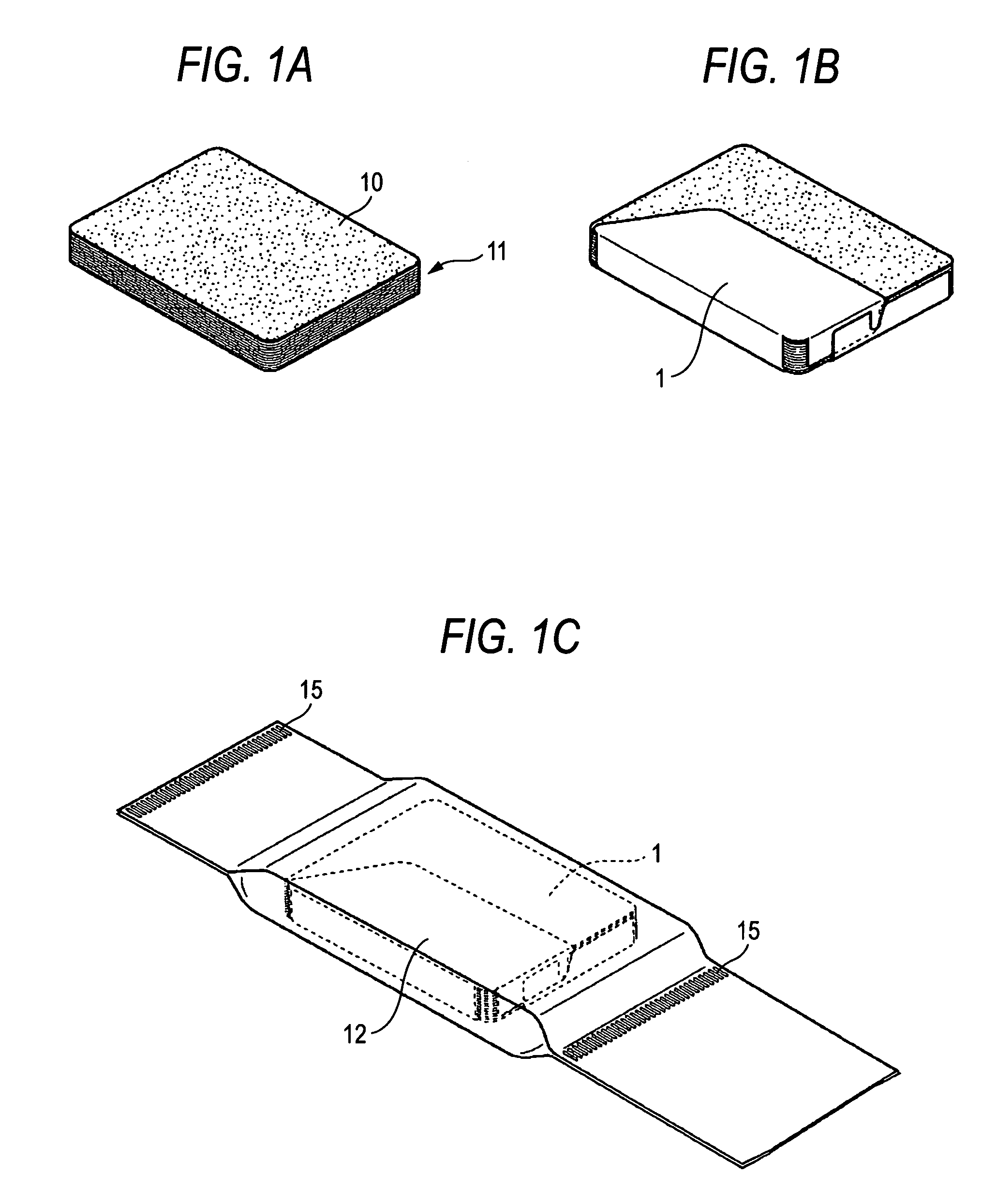Method for wrapping heat-developable photosensitive material
a technology of heat-developable and photosensitive materials, applied in the direction of photosensitive materials, photosensitive materials auxiliaries/base layers, instruments, etc., can solve the problems of film deterioration, incomplete discoloration, and no image forming system is satisfactory
- Summary
- Abstract
- Description
- Claims
- Application Information
AI Technical Summary
Benefits of technology
Problems solved by technology
Method used
Image
Examples
example 1
[0135]To 5,429 ml of water were added 88.3 g of phenylcarbamoyl gelatin, 10 ml of a 10% aqueous methanol solution of a PAO compound (HO(CH2CH2O)n—(CH(CH3)CH2O)17—(CH2CH2O)m—H in which the sum of m and n is from 5 to 7) and 0.32 g of potassium bromide to make a solution. To the solution which had been kept at 45° C. were then added 659 ml of a 0.67 mol / l aqueous solution of silver nitrate and a solution having KBr and KI dissolved therein in an amount of 0.703 mol and 0.013 mol per 1, respectively, in a double jet process while pAg was being controlled to 8.09 using a mixing agitator disclosed in JP-B-58-58288 and JP-A-58-58289 for 4 minutes and 45 seconds to effect nucleation. After 1 minute, to the emulsion was then added 20 ml of a 0.63 N aqueous solution of potassium hydroxide. After 6 minutes, to the emulsion were then added 1,976 ml of a 0.67 mol / l aqueous solution of silver nitrate and a solution having KBr, potassium iodide and dipotassium hexachloroiridate dissolved therein ...
example 2
(Preparation of PET Support)
[0163]Terephthalic acid and ethylene glycol were processed according to an ordinary method to obtain PET having an intrinsic viscosity (IV) of 0.66 as determined at 25° C. in a 6 / 4 by weight mixture of phenol and tetrachloroethane. PET thus obtained was pelletized, dried at a temperature of 130° C. for 4 hours, melted at a temperature of 300° C., extruded through a T-die, and then rapidly cooled to prepare an unstretched film having a thickness so as to be 175 μm after thermal fixing.
[0164]The unstretched film was longitudinally stretched 3.3 times by rolls having different peripheral speeds at a temperature of 110° C., and then crosswise stretched 4.5 times by a tenter at a temperature of 130° C. Thereafter, the film was thermally fixed at a temperature of 240° C. for 20 seconds, and then crosswise relaxed by 4% at the same temperature. Thereafter, the film was slit at the portion chucked by the tenter, knurled at both edges thereof, and then wound at a ...
PUM
| Property | Measurement | Unit |
|---|---|---|
| Tg | aaaaa | aaaaa |
| temperature | aaaaa | aaaaa |
| particle size | aaaaa | aaaaa |
Abstract
Description
Claims
Application Information
 Login to View More
Login to View More - R&D
- Intellectual Property
- Life Sciences
- Materials
- Tech Scout
- Unparalleled Data Quality
- Higher Quality Content
- 60% Fewer Hallucinations
Browse by: Latest US Patents, China's latest patents, Technical Efficacy Thesaurus, Application Domain, Technology Topic, Popular Technical Reports.
© 2025 PatSnap. All rights reserved.Legal|Privacy policy|Modern Slavery Act Transparency Statement|Sitemap|About US| Contact US: help@patsnap.com



